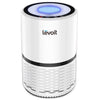
Have you ever stopped to think about the ingredients looming in your dishwasher detergent? When it comes to safeguarding your health, it is easy to overlook common household products. Detergents are typically used to make things clean and safe, so there is a tendency to think of them as being clean too. But that isn’t often the case. Even the leading brands of dishwashing detergent can contain ingredients that are extremely hazardous, bleach being one of the biggest contenders. So, what is the best non toxic dishwasher detergent to use? To find out, lets explore the components of a safe detergent.
The toxic bleach and fragrance chemicals found in conventional dishwasher detergents are incredibly difficult to wash away. They aren’t rinsed off with the soap suds. Instead, they are absorbed into your dishes, especially Tupperware and glass. They stay long after the dishes are done drying, transferring into your food or drink.
Most dishwasher detergents contain some combination of surfactants, preservatives, active ingredients, inactive ingredients, colors, and even fragrance. Some of the risks can be reduced by choosing unscented products, which is a good first step.
Another big concern is bleach. Washing your dishes with cascade is like eating a little bleach with every meal (Hudson, 2018). Studies show that repeat exposure to chlorine bleach, even in minute amounts, can ultimately damage your lungs, organs, eyes, skin, and microbiome (Benzoni, 2019). Much of this damage is done just by inhaling the fumes. Have you ever felt lightheaded or started coughing upon entering a room that was cleaned with bleach? These are your body’s signals that it is not safe.
Other ingredients often found in household detergents are associated with an increased risk of cancer. Two examples are Cocamide DEA and Formaldehyde. DMDM Hydantoin and Ethanolamine can damage your lungs, irritate your skin, and aggravate your nervous system. And you have probably heard of Sodium Borate—linked to severe endocrine and reproductive disorders.

We could keep going, but you get the point. Too often, we are unaware of all the hidden dangers. Thankfully, the Environmental Working Group (EWG) has a rating system which evaluates common household products. The rating indicates whether a product contains chemicals that could be hazardous to your health or the environment.
The scale ranges from A (little to no hazard) to F (significant hazard). Of the 131 dishwasher detergents evaluated by the EWG, just 13 have an A rating. Some of the lowest scoring detergents were popular brands such as Cascade, Palmolive, and Finish.
Ensure the dishwasher detergent you choose is safe for yourself and your family by scanning the ingredient list, choosing organic, and ensuring it is EWG approved. One dishwashing detergent I really like is Better Life Dishwasher Gel. It has an “A” rating from the EWG and gets my dishes sparkling clean.
|
What To Remember:
-Dangerous chemicals may hide in common household products.
-Even after dishes have been rinsed, trace toxins can remain because they are absorbed.
-Bleach and fragrance, and certain emollients can harm your microbiome and your health.
-Make sure your dishwashing detergent is approved by EWG.
|
Resources:
8 Toxic Chemicals in Conventional Dish Soap
Your Non-Toxic Dishwasher Detergent Guide
This blog contains Amazon affiliate links. The owner of this site may receive a small commission if you click a link and purchase a recommended product.

